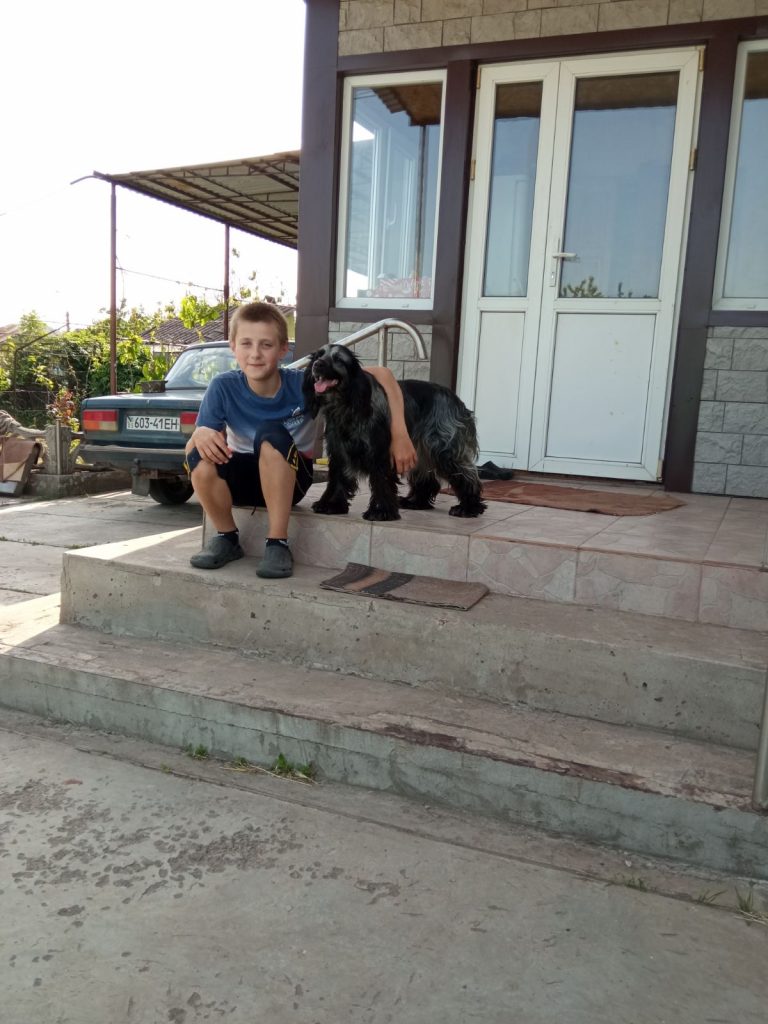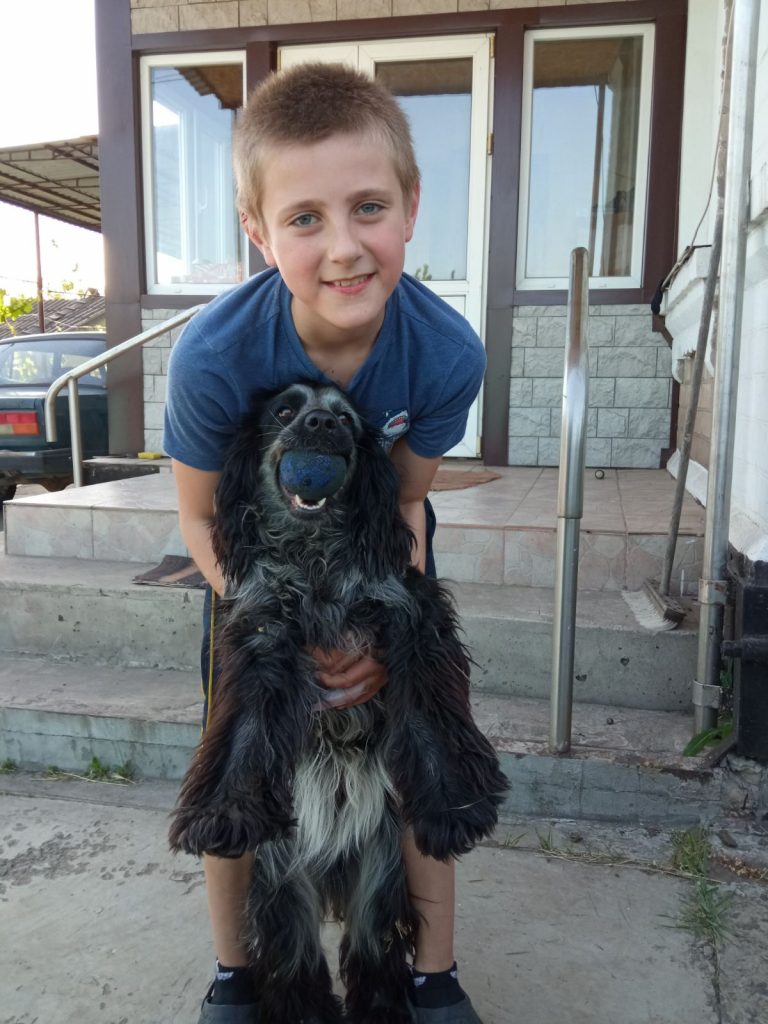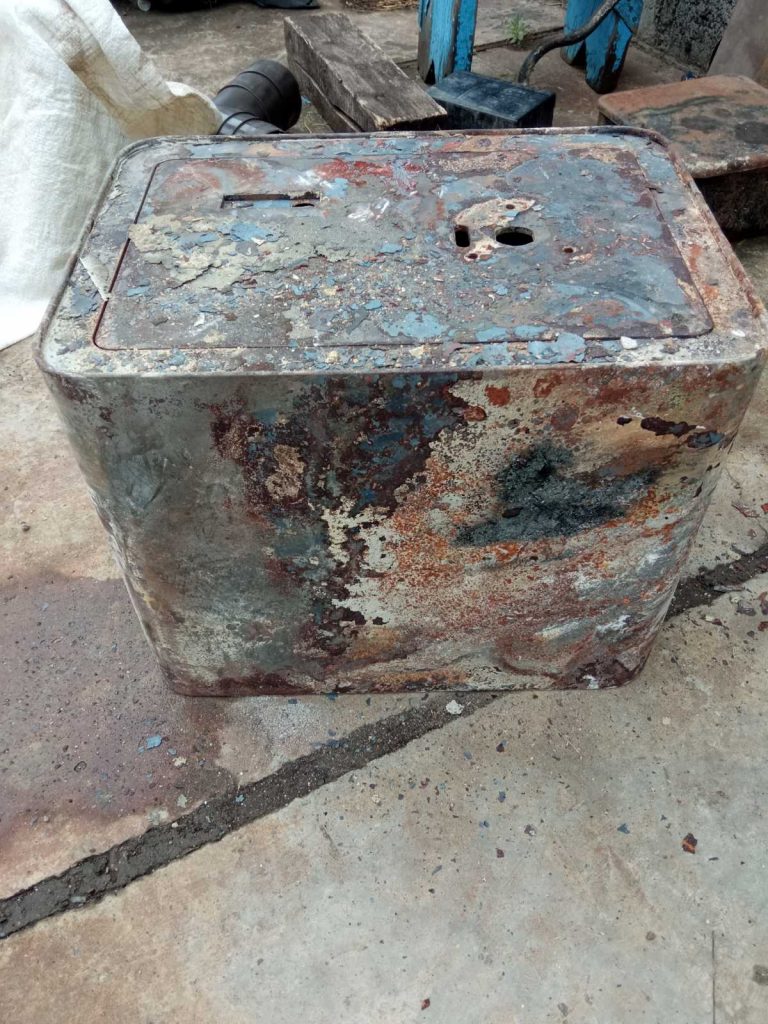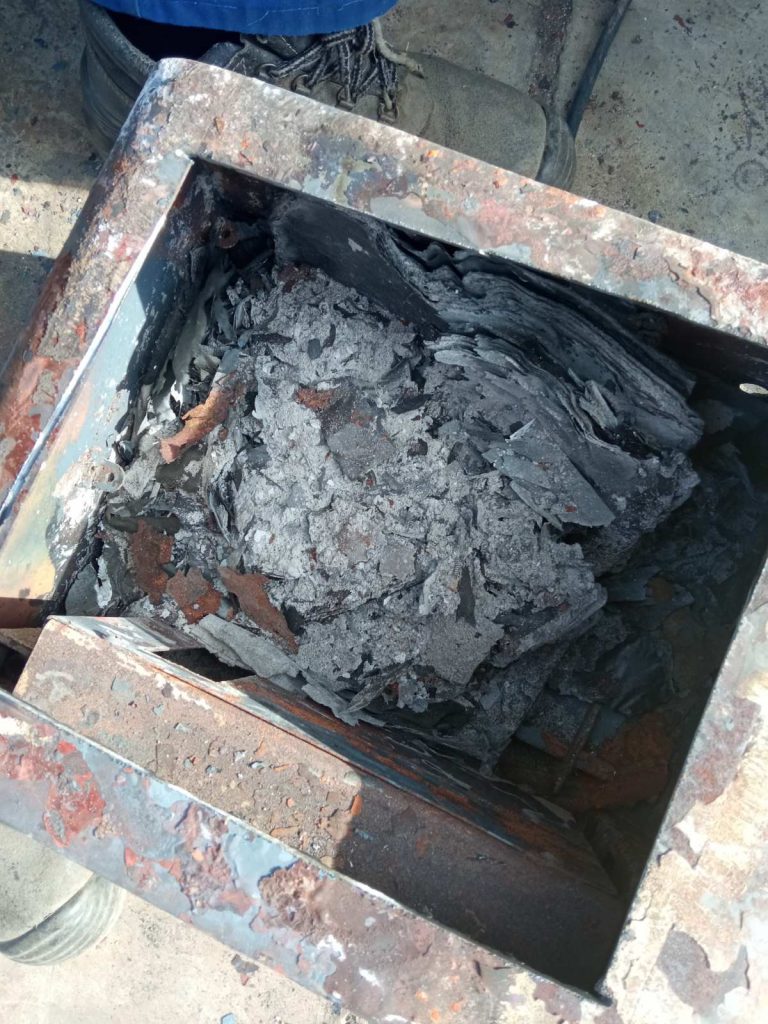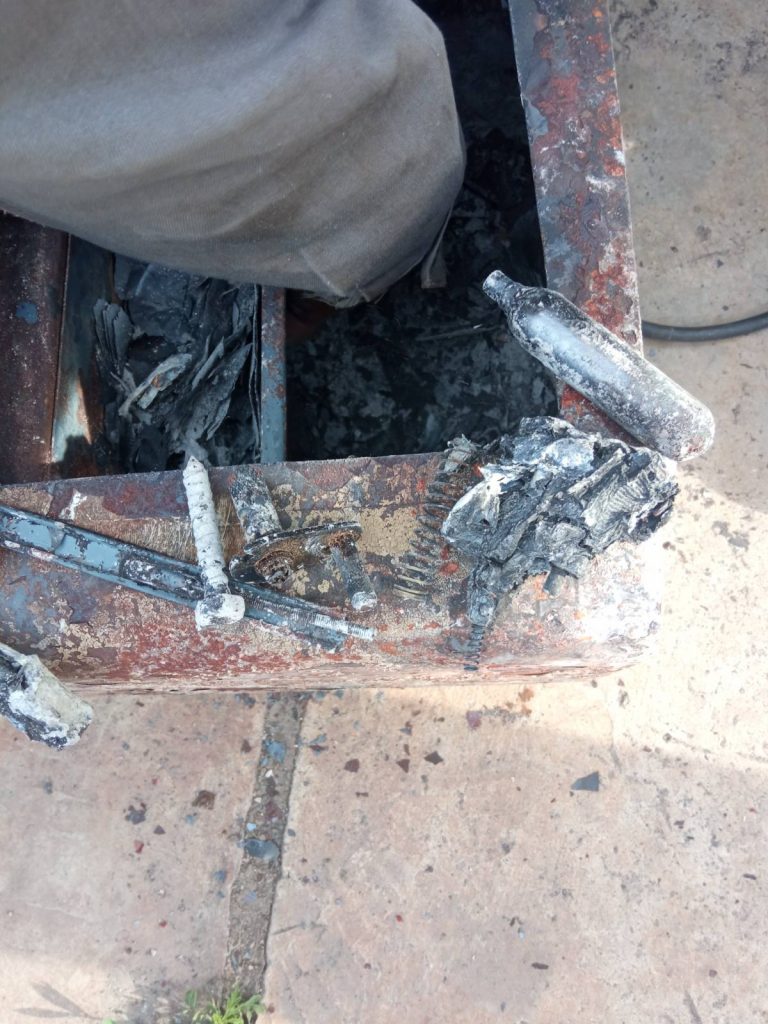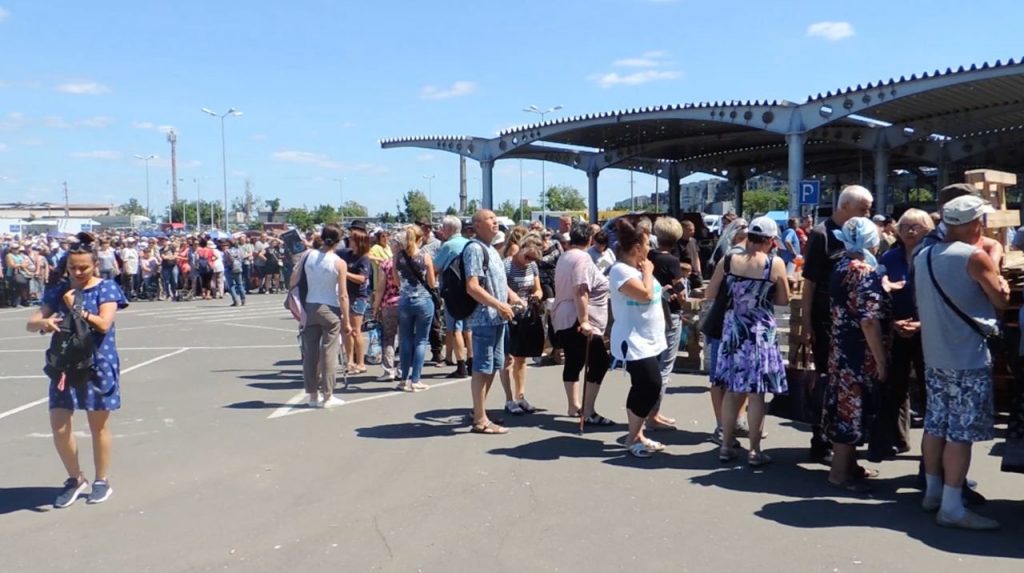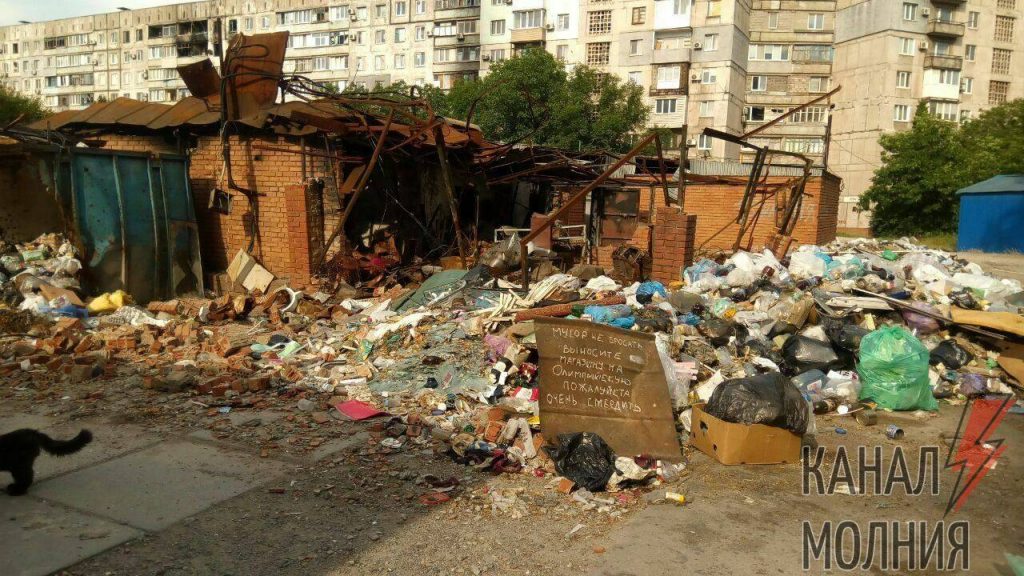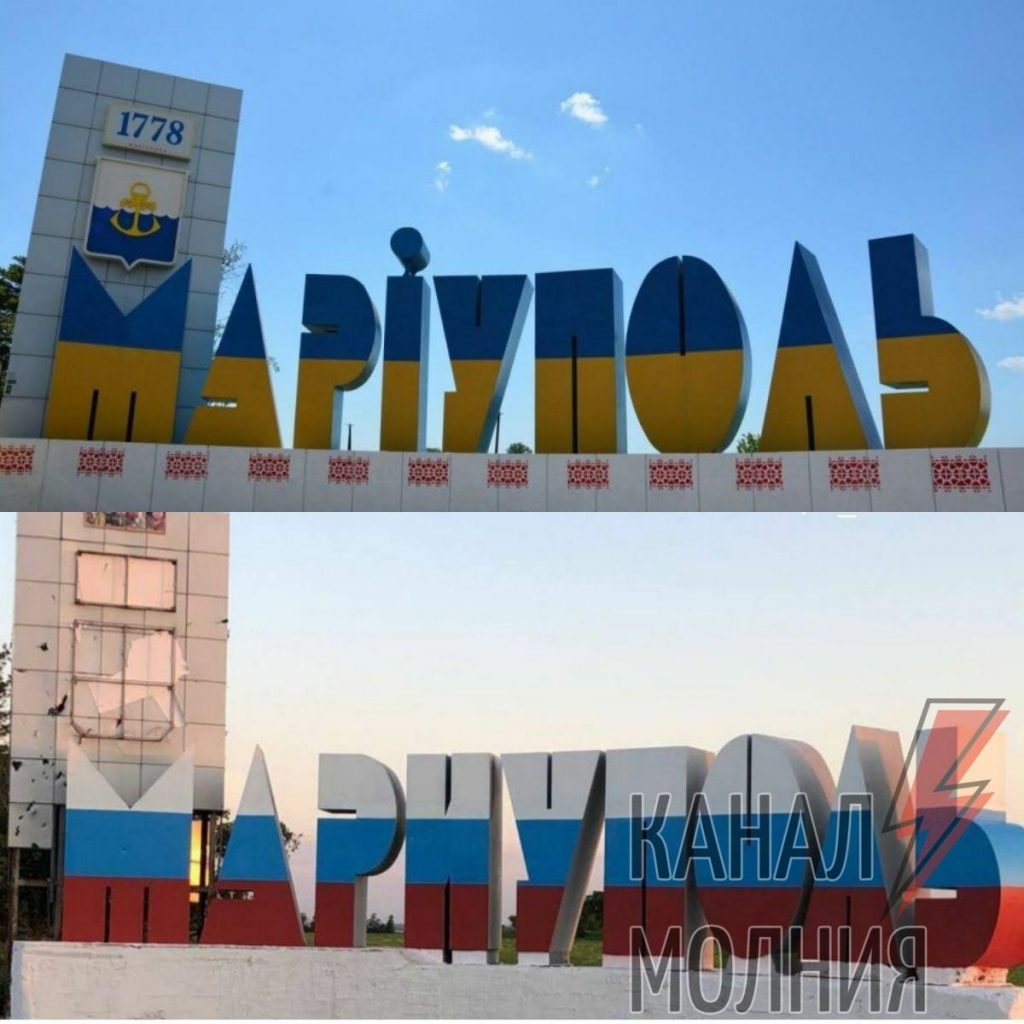One of the features of this war from the beginning has been the looting. I suppose that happens in all wars — the “sacking of Rome” and whatnot — but to see it in near real-time and while fighting is still going on has been particularly galling. When Russian soldiers retreated from the northern parts of Ukraine, they took whatever they could carry — jewelry, food, household goods and appliances — even toilets and women’s clothing. Shortly thereafter, images and videos began appearing of Russians sending their loot back home via courier services in Belarus and elsewhere: New footage shows Russian troops sending stolen Ukrainian items home through Belarus – Meduza, and Russian Soldiers Send Home 58 Tons of Looted Items from Ukraine — Investigation – The Moscow Times.
Although the Russians essentially reduced Mariupol to rubble before they took command of what was left, they’ve managed to add insult to injury by continuing to steal whatever was still of some value and wasn’t nailed down — although they’ve even “un-nailed” some stuff.
- Claiming that you’re doing it to “keep it safe” doesn’t mean you’re not stealing: How Russia ‘Removed’ Priceless Kuindzhi Artworks from Ukraine’s Mariupol – The Moscow Times; Putin’s Military Stole Famous Artwork From Ukraine Museum: Mariupol Council – Newsweek
- I’d actually seen something about this plan well over a month ago. The occupying forces basically said, “come move your car or we’ll have it towed” to the citizens of Mariupol (wherever they might be). People had until the end of June to reclaim their property, after which it would be taken to Donetsk and sold. As if people who had fled the city or country would be allowed back in to reclaim personal property. Well, times up! Russians and collaborators steal what cars are left in occupied Mariupol Intelligence Directorate – Ukrainska Pravda
- After pounding the Azovstal steel mill to the ground, Russia stole the products the factory had produced prior to the war: Ship to take metal from Mariupol to Russia; Kyiv decries looting – Reuters
- You’ve probably heard about all the grain that Russia has been stealing from Ukraine. Most of it has been stolen from and shipped out of places other than Mariupol, but Mariupol did have a new grain terminal and capabilities in place prior to the war. Upon taking Mariupol, one of the first things the Russians did was de-mine the port and ship out grain from the surrounding area: Turkish ship leaves Ukraine’s Mariupol after grain talks with Moscow – GeoNews. Of course, Russia denies that they’re stealing anything: Exclusive: Ukraine requests Turkey detain Russian-flagged ship it says carrying Ukrainian grain – Reuters. I’m sure that Russia having a “record harvest” is just a coincidence: https://mobile.twitter.com/Flash43191300/status/1540332247303192578
- I read reports from early in the occupation (I can’t find them now) that doctors(!) and hospital equipment — including a state-of-the-art treatment suite that had been installed at the end of last year — were taken to Donetsk. I remember writing out one of the hospitals where the personnel were forced onto a bus and taken out of the city; a lot of them ended up in Donetsk. There were almost no doctors left in Mariupol.
- Occupiers have also dismantled and taken to Donetsk the fountain that was next to the bombed theater in central Mariupol. Apparently the Nazis did the same thing in WWII. “Like fascists”: Russian military steal fountain from Mariupol – city council – Espreso
- It’s part of the “fountain work,” but they’re also stealing the paving stones from the park. It’s hard to imagine anything more petty. Oh, that’s right, they’ve also stolen playground equipment. https://twitter.com/ZMiST_Ua/status/1544260787539128320?ref_src=twsrc%5Etfw
(In one of my previous trips to Mariupol, I’d noted and taken pictures of some of the neat pavers that were everywhere in the city. It was just how the sidewalks were made in some places. Here’s a sample from before the war, and even before the big city renaissance of the previous two years. That’s what the Russians are stealing.)
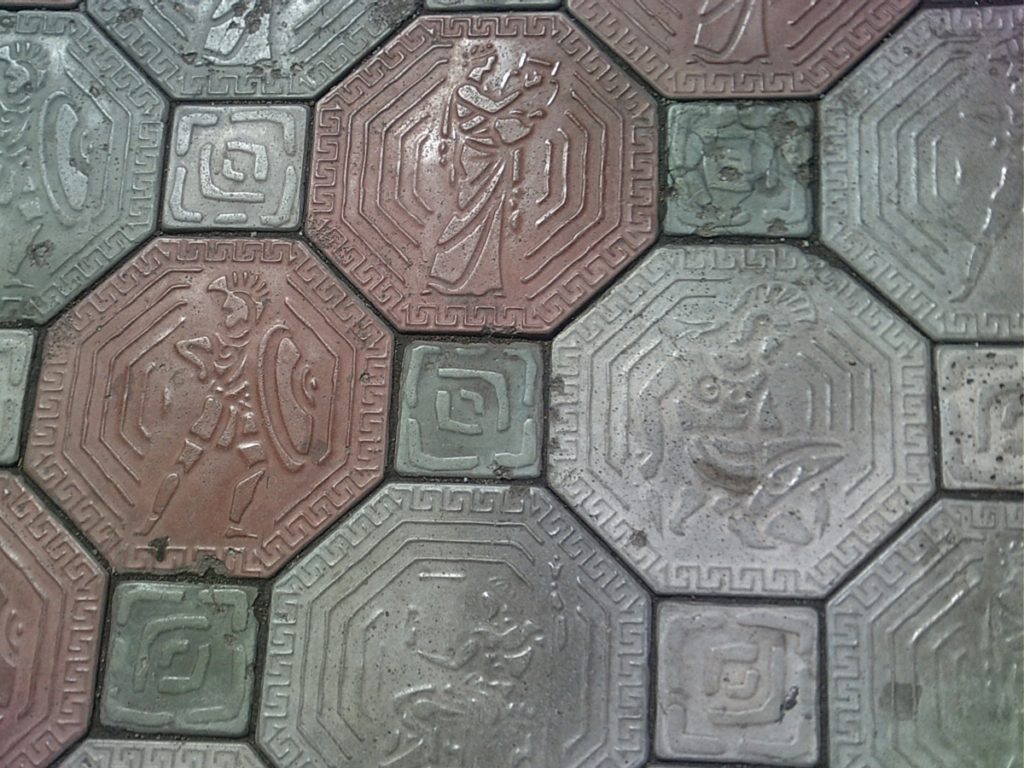
And what do the Russians give the people of Mariupol for all the stuff that’s been stolen…? Russian “humanitarian aid” to Mariupol: moldy stale bread, shovels – Ukrinform
